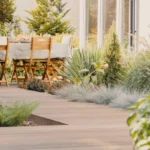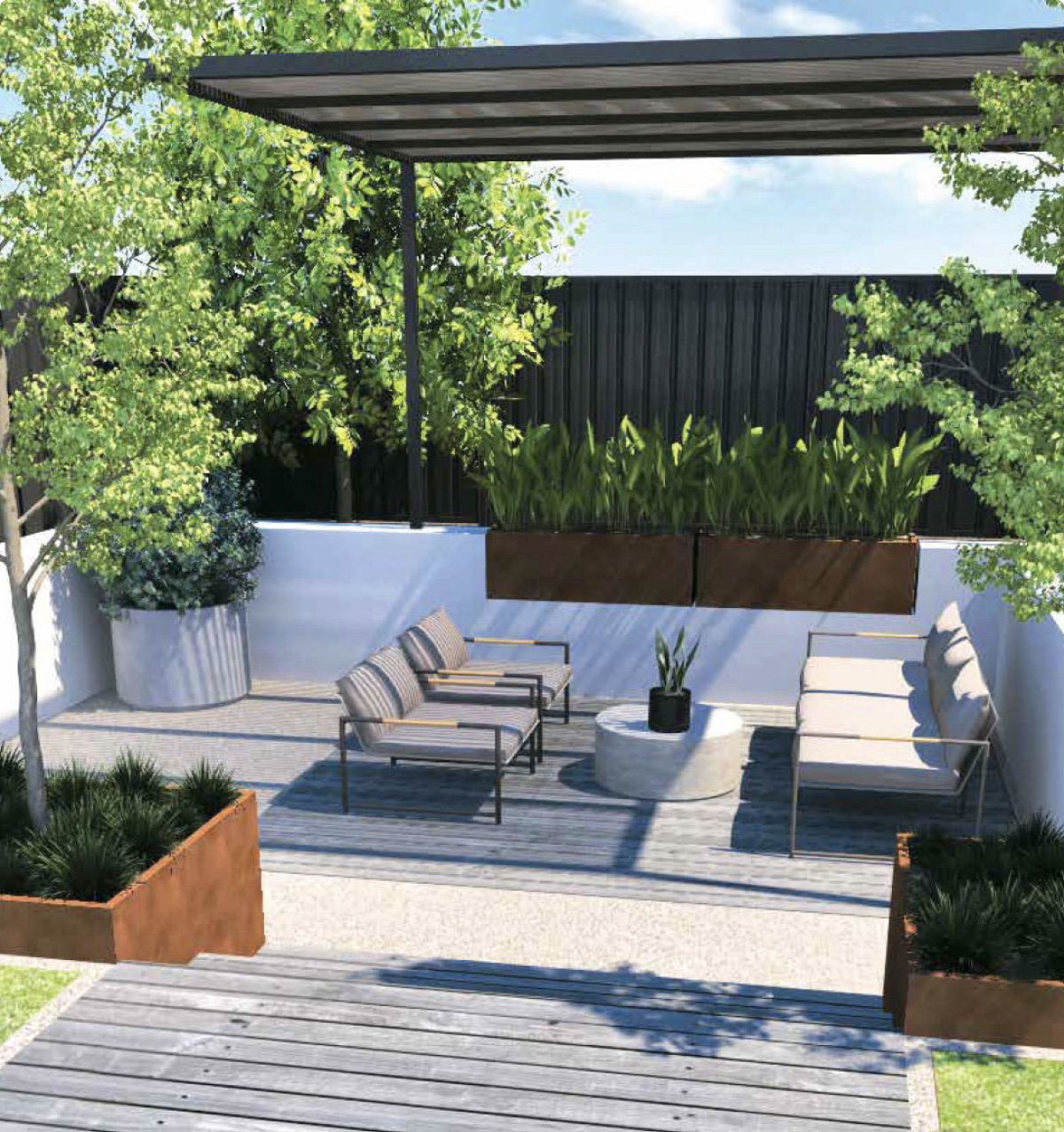
Gardening in Raised Beds – Top FAQ’s Answered
Introduction
Gardening in raised beds has become especially popular, so there are a lot of questions relating to them.
If you’re considering building (or replacing) your own raised garden beds chances are good you’ll have some questions too.
This short article provides brief answers to the top ten most frequently asked questions being asked online in Australia, in 2024.
If you have questions that aren’t covered here, please feel free to reach out via our contact page, or speak to your nearest Straightcurve stockist.
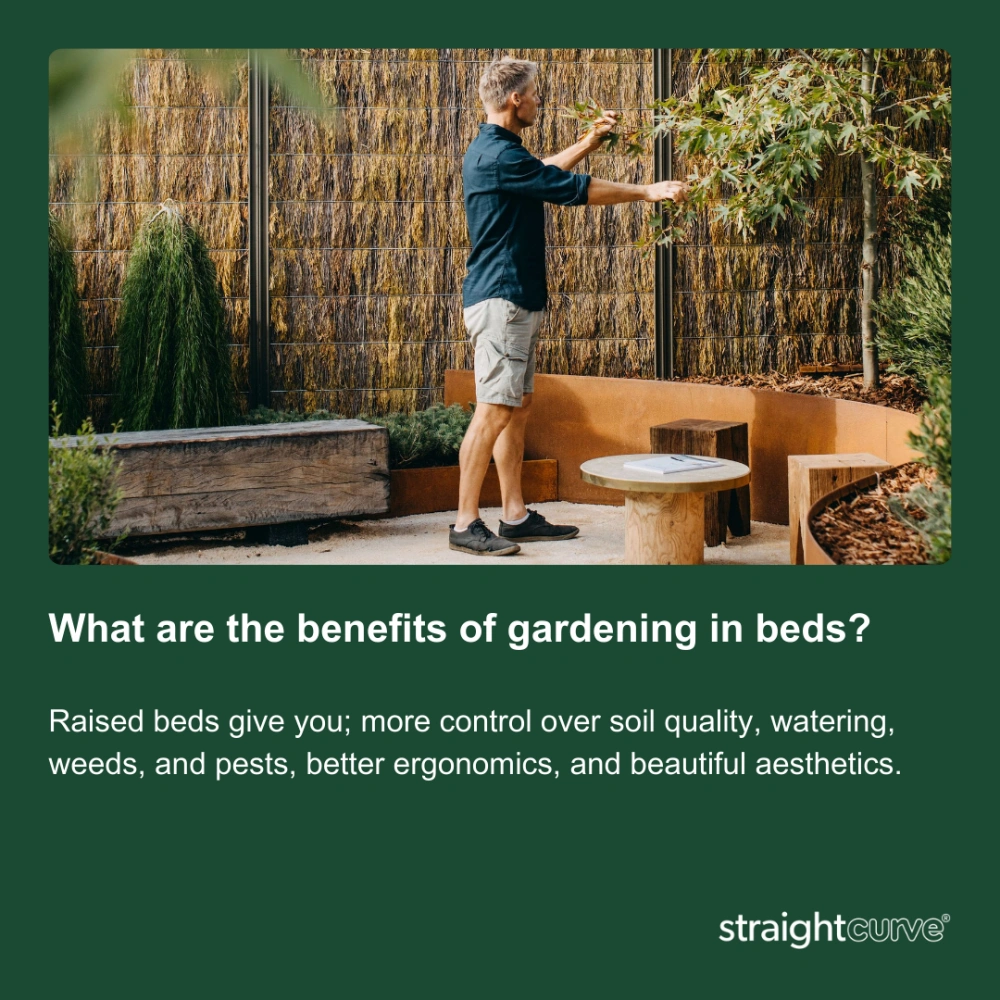
1. What are the benefits of gardening in raised beds?
The main benefits of gardening in raised beds (compared to in-ground gardening) are as follows:
- Improved control of soil quality.
- Fewer weeds & pests.
- Better draining soil.
- Aesthetically pleasing order & structure.
- Greater choice of location vs. in-ground beds.
- Suitable for a wider range of gardeners.
- An extended growing season.
See our Essential Guide for a deeper dive into these benefits.
2. What are the potential disadvantages?
The potential disadvantages of gardening in raised beds include the following:
- Setup, maintenance, and replacement costs.
- Water requirements.
- Unsuitable materials.
- Sub-optimal design.
- Material failures.
See our Essential Guide for more on these points.
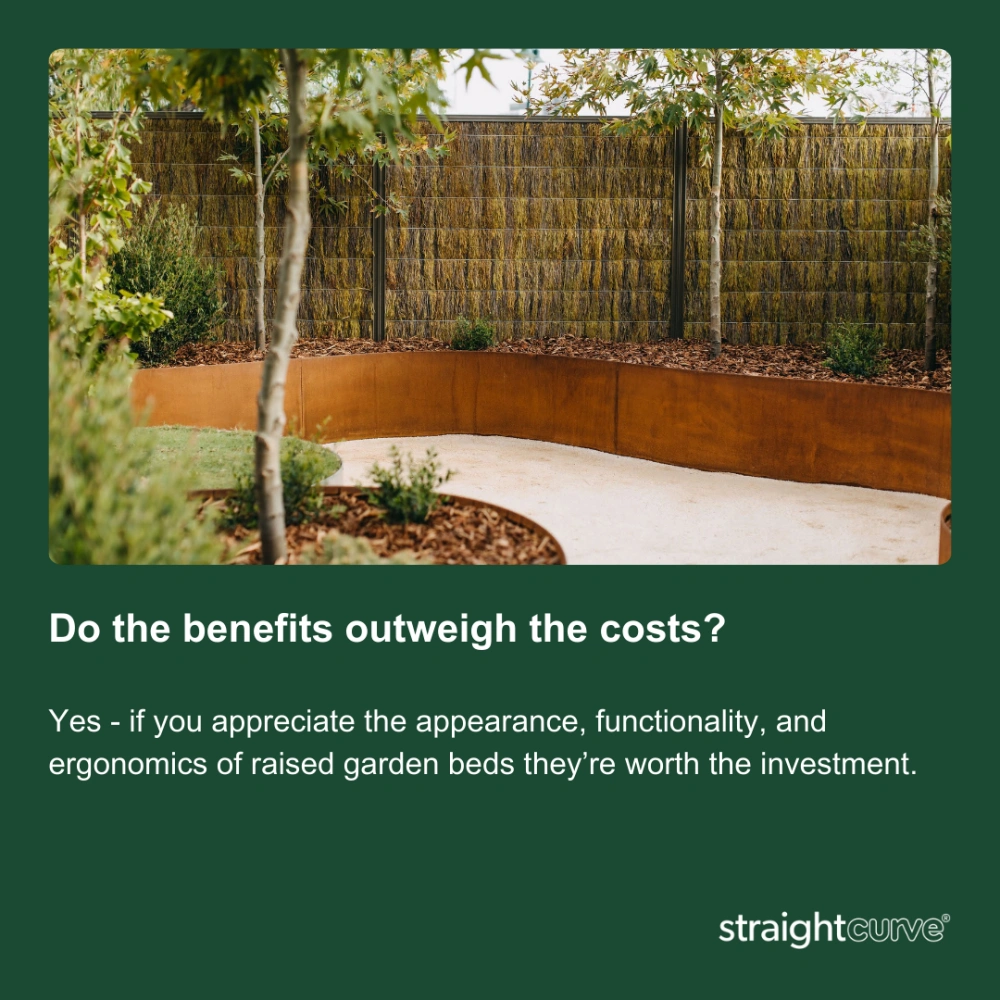
3. Do the benefits of raised bed gardening outweigh the costs?
That depends on your reasons for considering them. It’s certainly cheaper (in most cases, assuming you have decent soil already) to create plant beds (for flowers, veggies, and feature planting) at ground level.
That said, if you prefer the appearance, functionality, and ergonomics of raised garden beds, then it’s a worthwhile investment of your time & money to build & plant a raised bed garden.
4. What materials are safe to use to make raised beds?
Most materials can be considered safe for raised bed gardening. This question is usually about growing food (fruit + veg) and harmful chemicals leaching into the soil. So to ensure food safety, avoid using contaminated (e.g. recycled oil drums) or chemically-treated materials (e.g. some timbers).
It’s also worth considering this question from an injury prevention perspective, for instance, using materials that set your garden beds to a workable height (to avoid strains) and don’t have sharp or rough edges (that could cut hands or cause splinters).
People also ask “Is it safe to do gardening in steel raised beds?”. Again, if we’re talking about food safety the answer is yes; Steel garden beds are a food-safe option for growing anything edible.
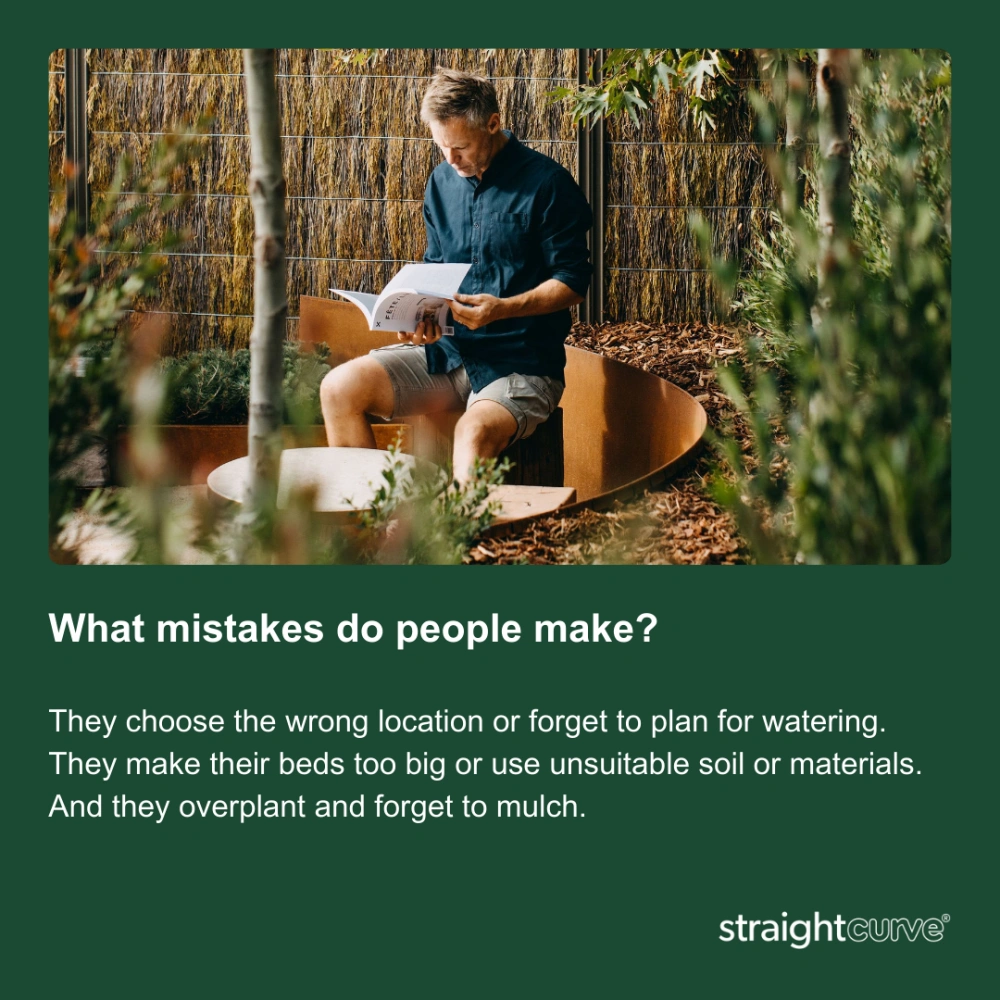
5. What mistakes do people make when gardening in raised beds?
These are the seven most common mistakes people make:
- They choose the ‘wrong’ location – with too much exposure to the elements.
- They forget to factor in water – so the job becomes a chore and/or plants fail.
- They make beds ‘too big’ – which makes planting, weeding, and harvesting difficult.
- They use the ‘wrong’ materials – so they either can’t grow edibles or the structure doesn’t last.
- They use the ‘wrong’ soil – thereby creating sub-optimal growing conditions for their chosen plants.
- They choose oversized plants and/or overplant their beds – so the plants don’t get enough nutrients.
- They forget to mulch – which leads to topsoil erosion and/or beds drying out more rapidly.
See our Essential Guide to Raised Garden Beds for more on the above.
6. Why do people like gardening in raised beds?
Reasons vary – a quick search of Reddit, Quora, or any Gardening Forum will prove that. What I like about raised bed gardening is that I can tweak the soil to suit what I’m growing (which can change over growing seasons). I can control watering and soil drainage. I can keep the soil level at a height I can work standing up (which is easy on my back when picking out the odd weed). And I like how the design of my raised beds adds structure and visual interest to my garden.
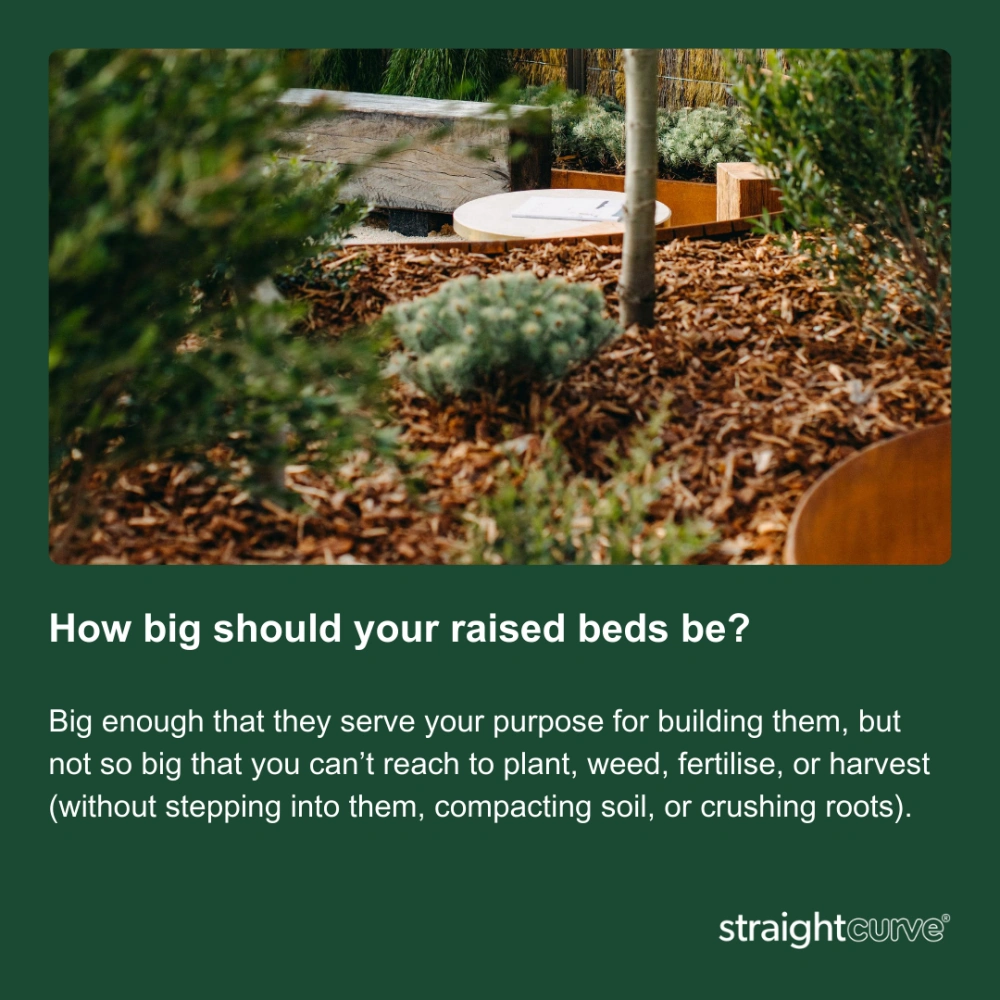
7. How big should your raised beds be?
The answer to this depends on whether your raised garden beds will be planted purely for aesthetics (where you may be less concerned about reach) versus a raised bed you intend to plant, grow, and harvest in which case you can go as wide as you wish but only as deep as is practical to reach (without stepping up into the beds). It’s best to avoid stepping into beds so as not to compact soil, reduce drainage, or crush roots.
8. How do you choose materials for building raised beds?
The best way to select materials for gardening in raised beds is by asking yourself several shortlisting questions, such as:
i) “What look or aesthetic do I prefer?”
- Bold & chunky (e.g. rendered brick)
- Natural-looking (e.g. rot-resistant timber)
- Utilitarian (e.g. rock-filled gabions)
- Contemporary (e.g. galvanised steel)
- Rustic (e.g. weathering steel)
ii) “How long do I want my beds to last?”
- One season (plastic or lightweight timber could suffice)
- A few years (more durable materials would be better)
- Over a decade (materials designed for long-term weathering are best)
iii) “What am I prepared to spend?”
- Your budget will dictate what materials are suitable.
iv) “How much time, effort, and skill can I muster?”
- You may like the look of masonry but if you don’t have the budget or skill to lay foundations, build a wall, render, and paint this option may not be for you.
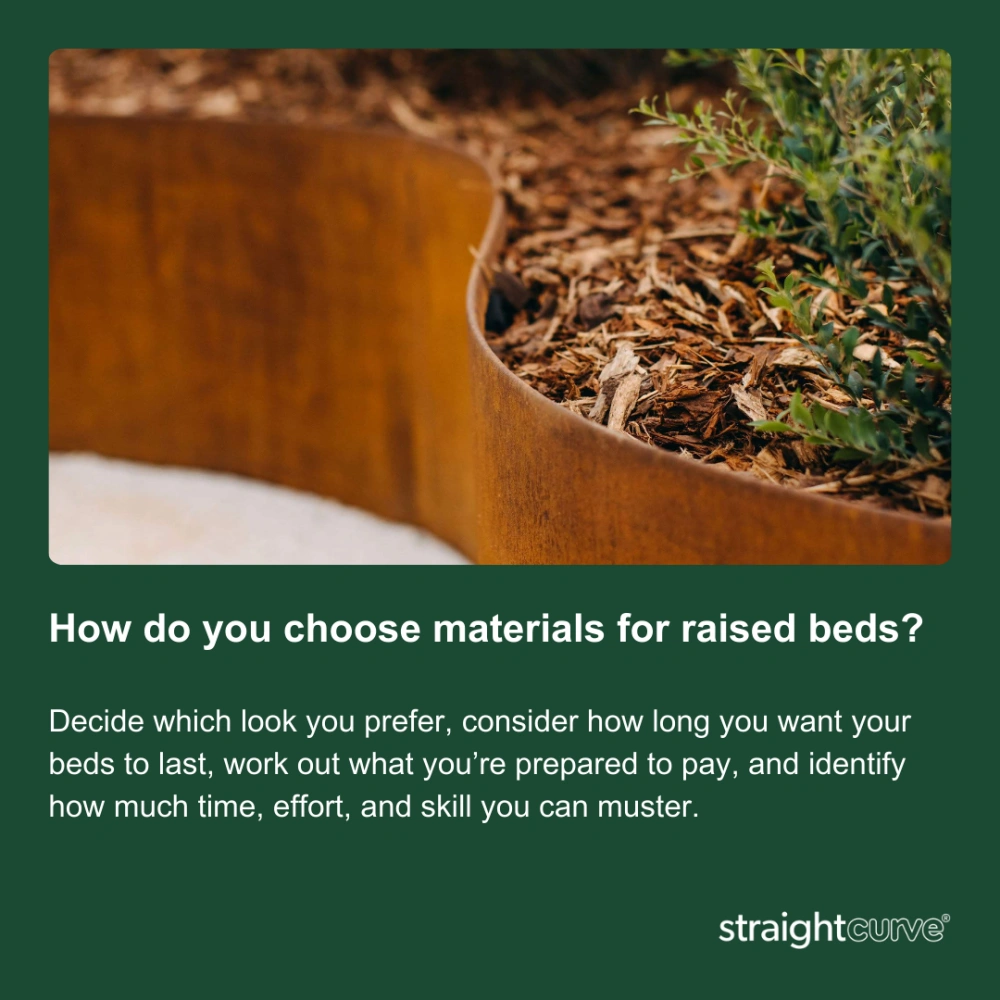
9. What soil is best for raised beds?
The best soil for your raised beds is the type that suits the plants, vegetables, trees, or flowers you intend to grow. For instance, native plants thrive in sandy soil whereas fruiting plants (like strawberries) grow best in a deep, sandy loam soil that’s well-drained and rich in organic matter.
To answer this question for your situation, create a planting scheme and then find out which soil types offer the best growing conditions.
See our Essential Guide for more on this.
10. How do you design a beautiful raised garden bed?
Beauty is in the eye of the beholder so the answer to this question depends on what you find attractive. That said, there are certain elements you could consider, such as;
- The shape of the bed – e.g. straight, boxy, or curved.
- The colour & texture of the bed – e.g. stained timber, powder-coated metal, rendered masonry, weathered steel.
- The preciseness and craftsmanship of the bed – e.g. how well put together, finished, and joined it is.
- What you plant and how you plant in the structure – e.g. if you’re growing for aesthetics, consider both the mix of plants and the density of your planting scheme – be careful not to crowd.
- And finally, what you pair with your bed – e.g. the mix of colours and textures used alongside your raised bed will influence the overall aesthetic of your garden.
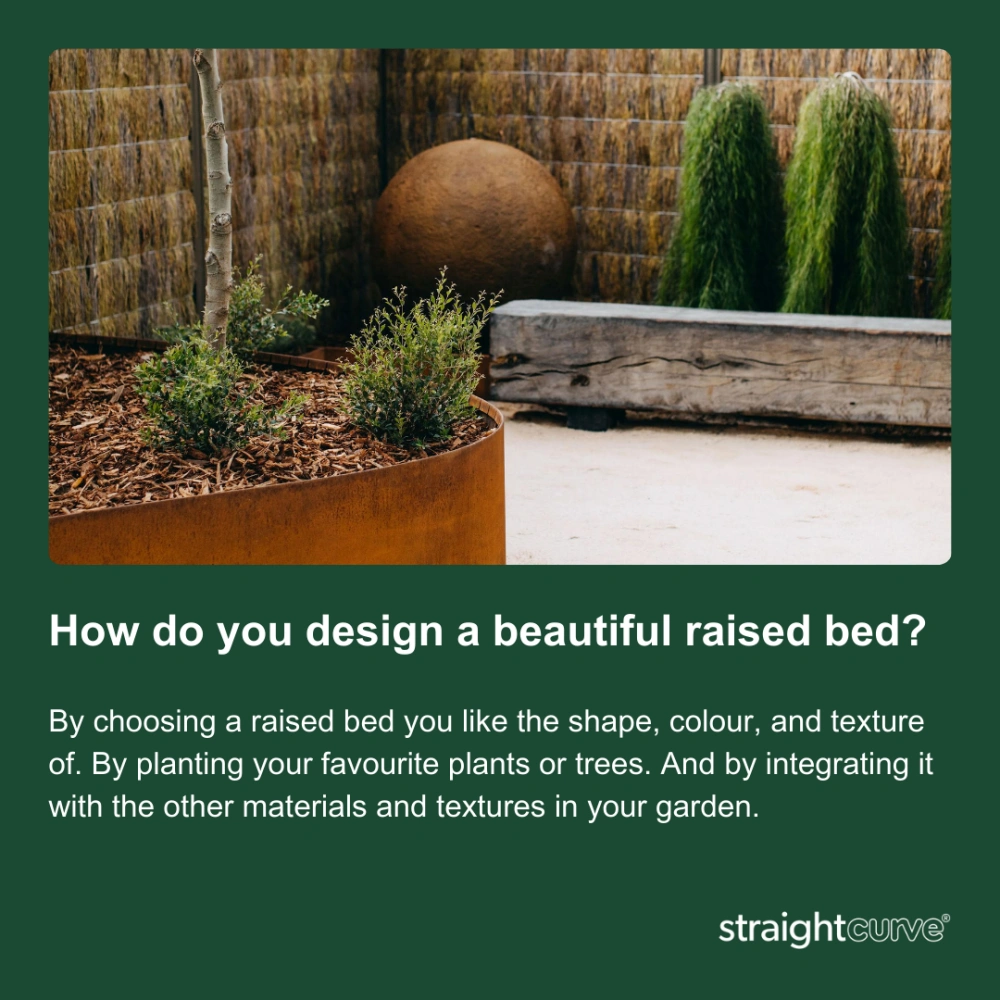
Conclusion + Helpful Resources
The Straightcurve Raised Garden Bed range is worth considering if you’re chasing a high-quality, modular steel option that’s extremely customisable and DIY user-friendly.
Use these links to decide if our products could be what you’re searching for:
- Download Our Product Catalogue – Download the pdf and skip to the Raised Bed section.
- Check Out Our Image Gallery – Here you’ll find examples of raised beds created using our products.
- Introduction Video – Watch this video to see which style of product might work for your project.
- View Installation Videos – Here you’ll discover how easy it is to build raised beds yourself.
- Find Your Nearest Dealers – Find stockist locations and contact details on our “Where To Buy” map.
- Request Pricelist & Brochure – Submit to receive a brochure, pricelist, and stockist’s details by email.
- Essential Guide to Raised Garden Beds – Our comprehensive article with project images.


